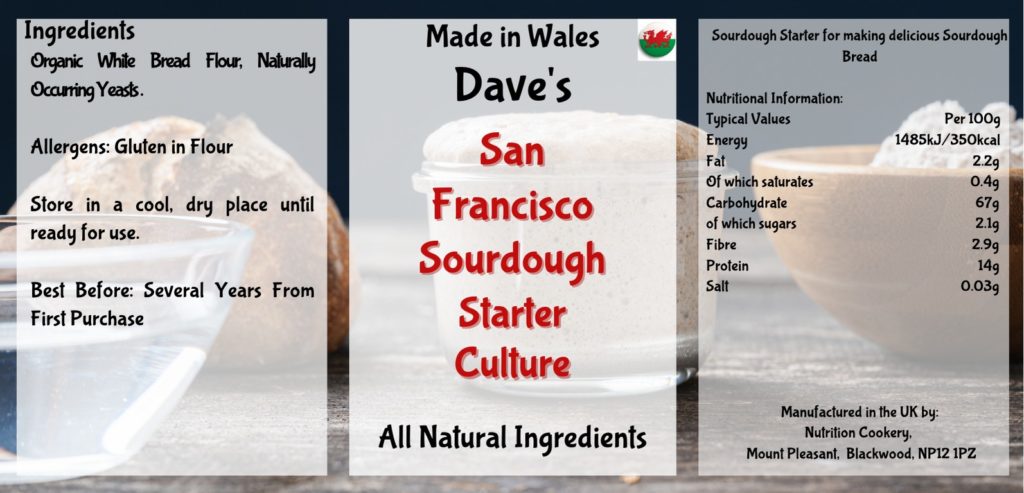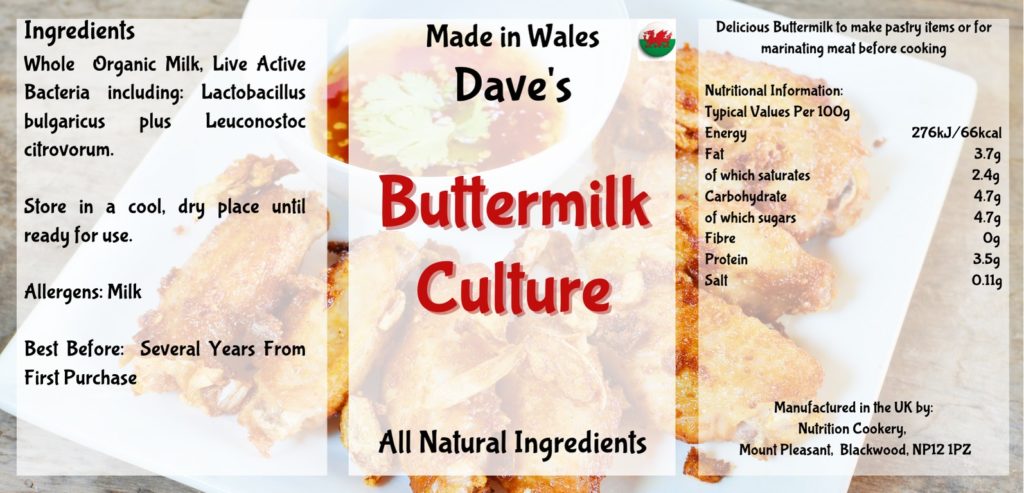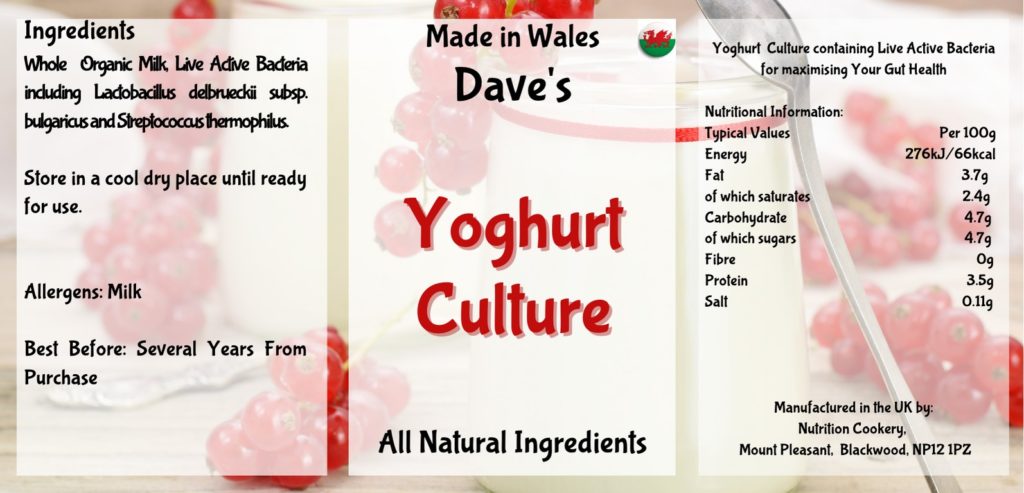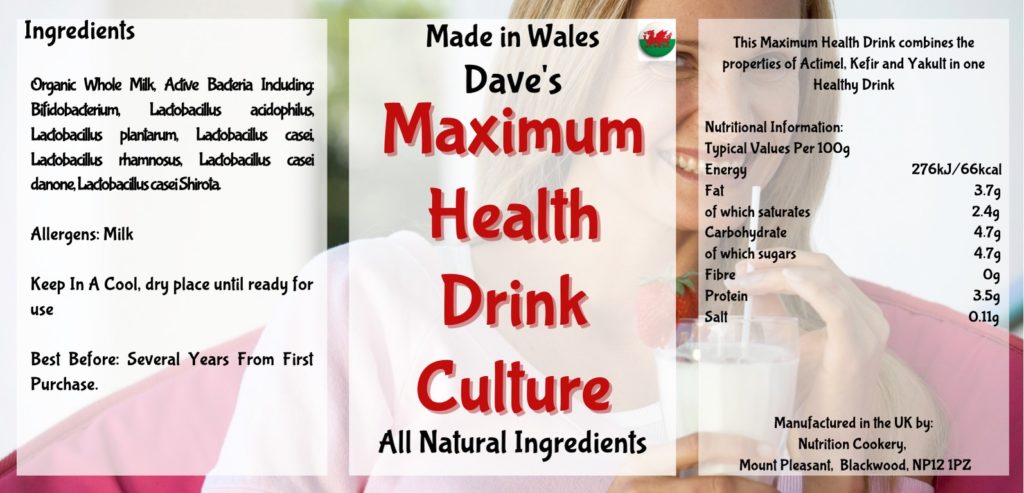We are launching our new range of dried cultures on 6th May, 2023.
Product #1
San Francisco Sourdough Starter

Sourdough bread traces its origins to ancient Egypt and is common in parts of Europe.
San Francisco is synonymous with sourdough bread, which has a rich history dating back to the gold rush era that began in 1848. Miners would often carry sourdough starters with them on their journey to ensure they’d always have access to freshly baked bread. Gold miners valued it for their camps because of its durability, and the relative ease of obtaining yeast. Although many different kinds of pre-ferment (a dough-like mixture of fermented flour and water containing bacteria and wild yeast) are suitable for making sourdough, specific species of bacteria (Lactobacillus sanfrancisco) and wild yeast (Candida humilis) have been identified as the predominant cultures in local breads. Sourdough starters were carefully kept and maintained by each bakery as a “mother sponge”
Bread was not only easy to transport and a great source of nourishment throughout the day, but also a means to trade for other goods.
The prices of everything from food to supplies skyrocketed during the gold rush due to the influx of optimistic hopefuls looking to get their hands on a piece of the fortune. At the time, eggs were selling for $3 apiece, and a slice of buttered bread would go for as much as $1 — that slice of bread would be over $30 today!
By 1854 there were 63 bakeries in San Francisco.
For More Information Click on the Link Below:
San Francisco Sourdough Starter
Product #2
Buttermilk Culture

Buttermilk is a fermented dairy drink. Traditionally, it was the liquid left behind after churning butter out of cultured cream. As most modern butter is not made with cultured cream but sweet cream, most modern buttermilk is cultured. It is common in warm climates, where unrefrigerated fresh milk sours quickly.
Buttermilk can be drunk straight, and it can also be used in cooking.
In making soda bread, the acid in buttermilk reacts with the raising agent, sodium bicarbonate, to produce carbon dioxide which acts as the leavening agent. Buttermilk is also used in marination, especially of chicken and pork.
Although it looks and tastes rich and creamy, traditional churned buttermilk was always non-fat because all the fat wound up in the homemade butter. Our cultured buttermilk is made from whole milk and is full-fat.
For More information Click on the Link Below:
Buttermilk Culture
Product #3
Greek Yoghurt Culture

Yoghurt is a milk product obtained by fermentation of milk specific microorganisms, which shall be viable, active and abundant in the product Lactobacillus delbrueckii subsp. bulgaricus and Streptococcus thermophilus.
Yoghurt is a popular dairy product that’s made by the bacterial fermentation of milk.
The bacteria used to make yoghurt are called “yoghurt cultures,” which ferment lactose, the natural sugar found in milk.
This process produces lactic acid, a substance that causes milk proteins to curdle, giving yoghurt its unique flavour and texture.
Yoghurt can be made from all types of milk. Varieties made from skim milk are considered fat-free, whereas those made from whole milk are considered full-fat. Our Yoghurt is made from Whole Milk
For More Information Click on the Link Below:
Greek Yoghurt Culture
Product #4
Maximum Health Drink

Researchers state that a good probiotic should have up to 10 billion colony forming units (CFU) that you take daily, and that it should have least 5 different strains per bottle.
When reconstituted, our Maximum Health Drink is filled with hundreds of billions of active bacteria. Regular consumption of beneficial bacteria keeps your gut balanced and your microbiota happy which, in turn, will balance your mind.
You can find strains of Lactobacillus (including Lactobacillus bulgaricus/acidophilus/paracasei/keferi/casei Shirota) Lactococcus lactis, Entrococcus faecium and Streptococcus thermophilus amongst others.
Why do we need good bacteria?
100 trillion bacteria live in and on your body. Some are present on the surface of the skin and inside the mouth, nose and urogenital tract – but most live within your gut. Here the good bacteria can neutralise toxins, inhibit yeast and bad bacteria in the gut, whilst working to keep the gut healthy as well as beneficially influencing the immune system.
What does the gut flora do?
The gut flora helps to neutralise some of the toxic by-products of digestion, reduce harmful substances (such as toxins and carcinogens), and discourage ‘bad’ bacteria and yeasts. It also helps to stimulate the digestive process and aid the absorption of nutrients, as well as producing vitamins including B and K. In addition, the by-products of the growth of beneficial bacteria in the gut help regulate the growth of the gut cells and keep them healthy.
For More Information Click on the Link Below:
Maximum Health Drink






